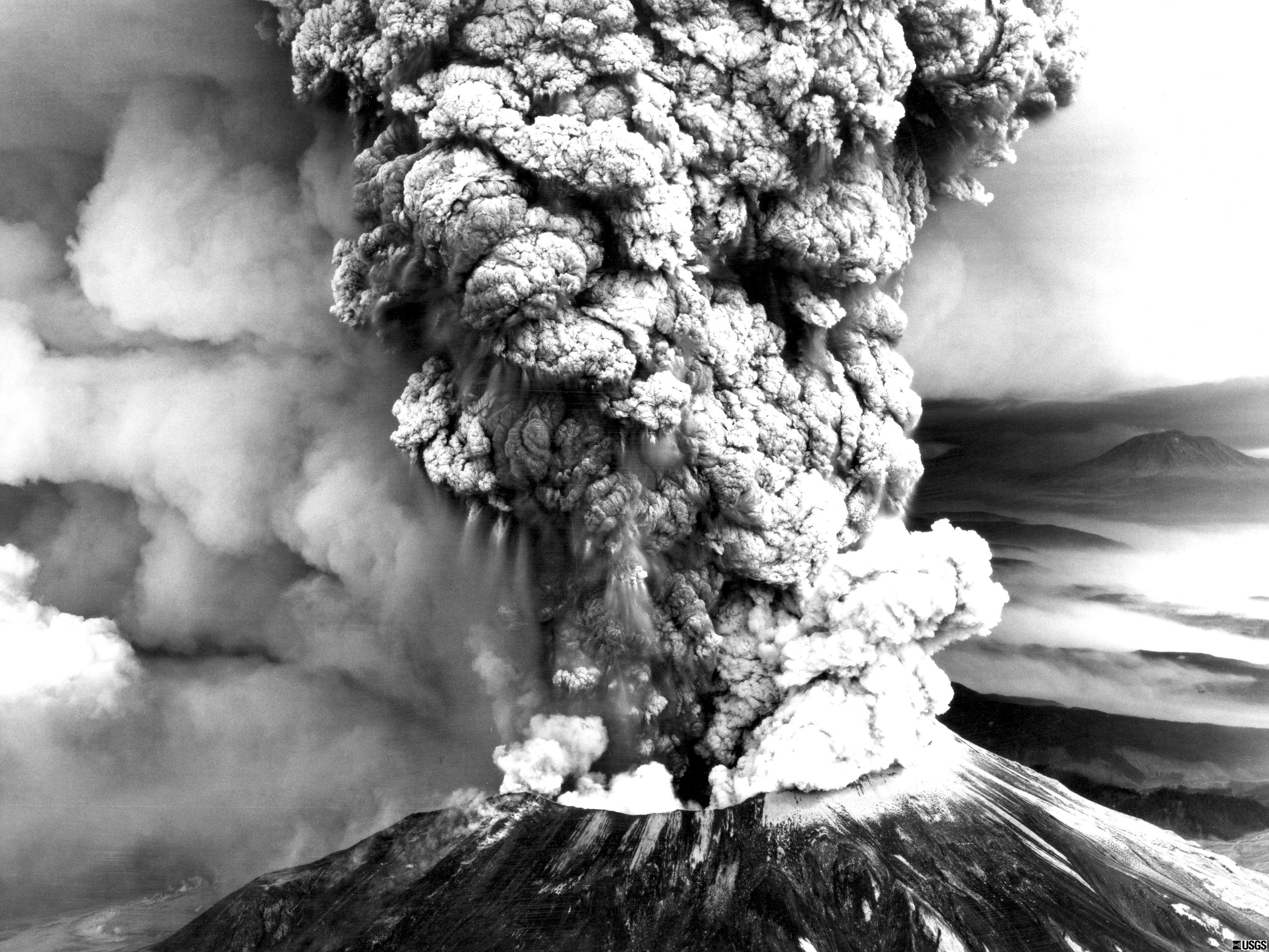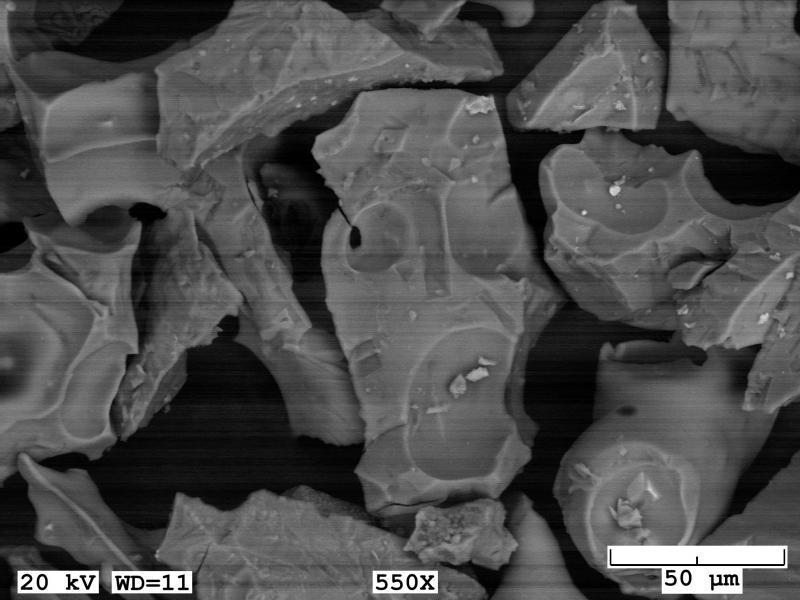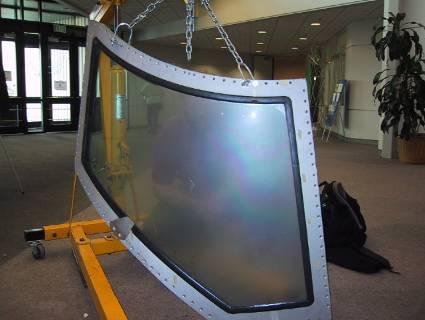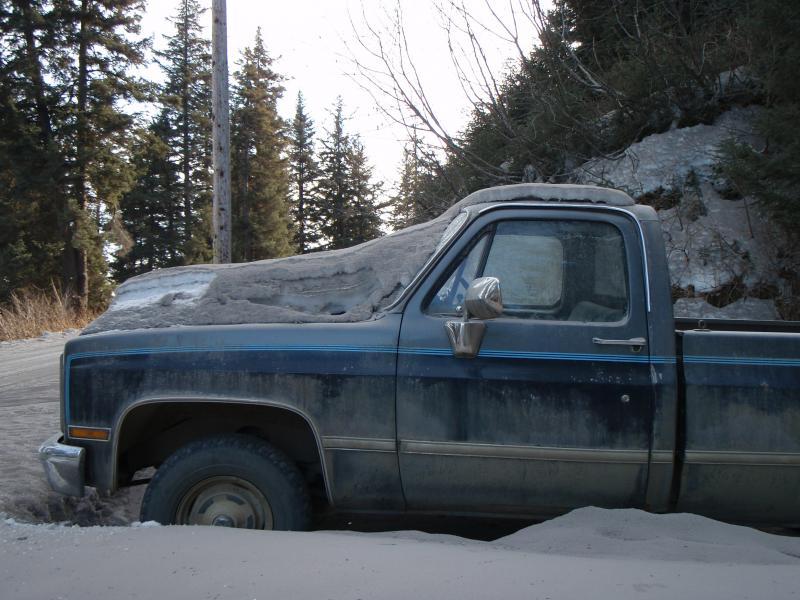What are the special hazards from volcanic ash?

Mount St. Helens erupting
The May 18, 1980 eruption of Mount St. Helens. A massive ash plume was sent high into the atmosphere. Wind blew 520 million tons of ash eastward across the United States and caused complete darkness in Spokane, Washington, 400 km from the volcano. United States Geological Survey image by Robert Krimmel.
Most volcanic hazards affect only those regions within a few kilometres of a volcano. Volcanic ash, however, may affect regions thousands of kilometres from its source. This means that Canada might be impacted by ash from distant volcanic eruptions, especially eruptions in Alaska or Washington. Volcanic ash is unlike the soft ash produced by burning wood: it is hard, abrasive, slightly corrosive and electrically charged, and it does not dissolve in water.

Ash from Mount St. Helens
Ash from Mount St. Helens, erupted May 18, 1980, collected 39 km downwind. United States Geological Survey image by D. Weiprecht.
Ash poses a serious threat to aircraft because it can abrade surfaces, can contaminate openings, and can be sucked into jet engines and melted, causing severe damage. On or near the ground, volcanic ash can reduce visibility, make surfaces slippery, cause roofs to collapse, damage crops and wild plants, clog ventilation systems, corrode metal, contaminate water supplies, irritate or damage eyes, and pose a health risk to people with respiratory problems.

Ash from Pavlof volcano
Ash collected from Pavlof volcano, Alaska, 2013. 50 μm equals 0.05 mm. United States Geological Survey/ Alaska Volcano Observatory image by Kristi Wallace.
Cleanup of volcanic ash can be tedious, time-consuming, and expensive. If a large explosive eruption occurred in or near Canada, air travel disruptions would be likely, even in areas where no ash was deposited on the ground, as was the case during the 2010 eruption of Eyjafjallajökull in Iceland.

Aircraft window frosted by volcanic ash
Frosting of aircraft window by volcanic ash: the cockpit window of the KLM B747 airplane that encountered the ash cloud from Mount Redoubt, Alaska in December 1989. (Image by René Servranckx, Environment Canada)
The Interagency Volcanic Event Notification Plan (IVENP) ensures rapid and effective communication of information to the aviation community (and other key agencies) about the sudden onset of volcanic eruptions within or near Canada.

Vehicle covered in ash
Vehicle covered in ash and snow at Seldovia, Alaska, from an eruption of Redoubt volcano on April 4, 2009. United States Geological Survey/ Alaska Volcano Observatory image by Kristi Wallace
Worldwide, nine Volcanic Ash Advisory Centres (VAACs) monitor volcanic ash plumes and use computer models to predict where ash will go. Environment Canada’s Montreal Volcanic Ash Advisory Centre deals with volcanic ash hazards in Canadian airspace.